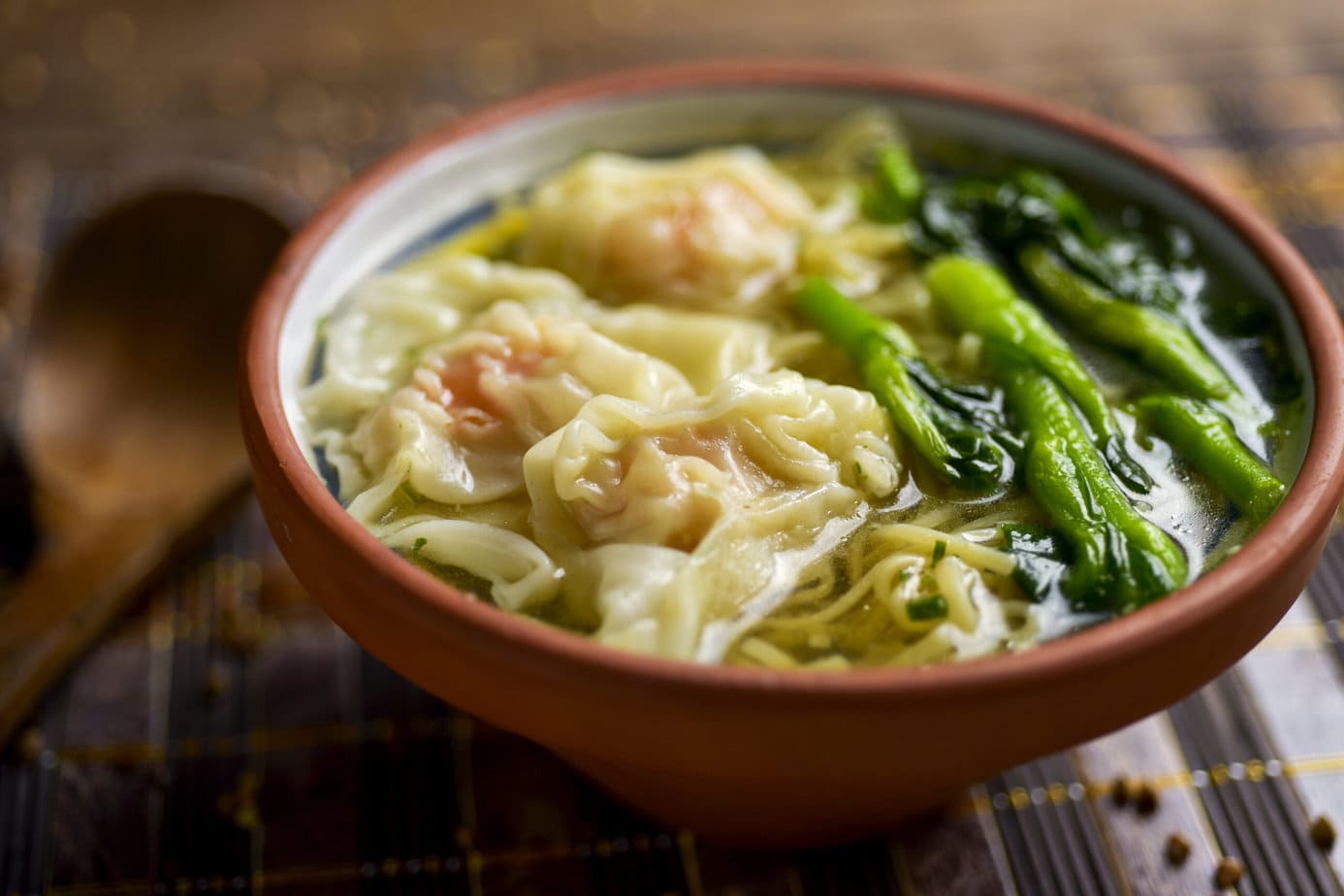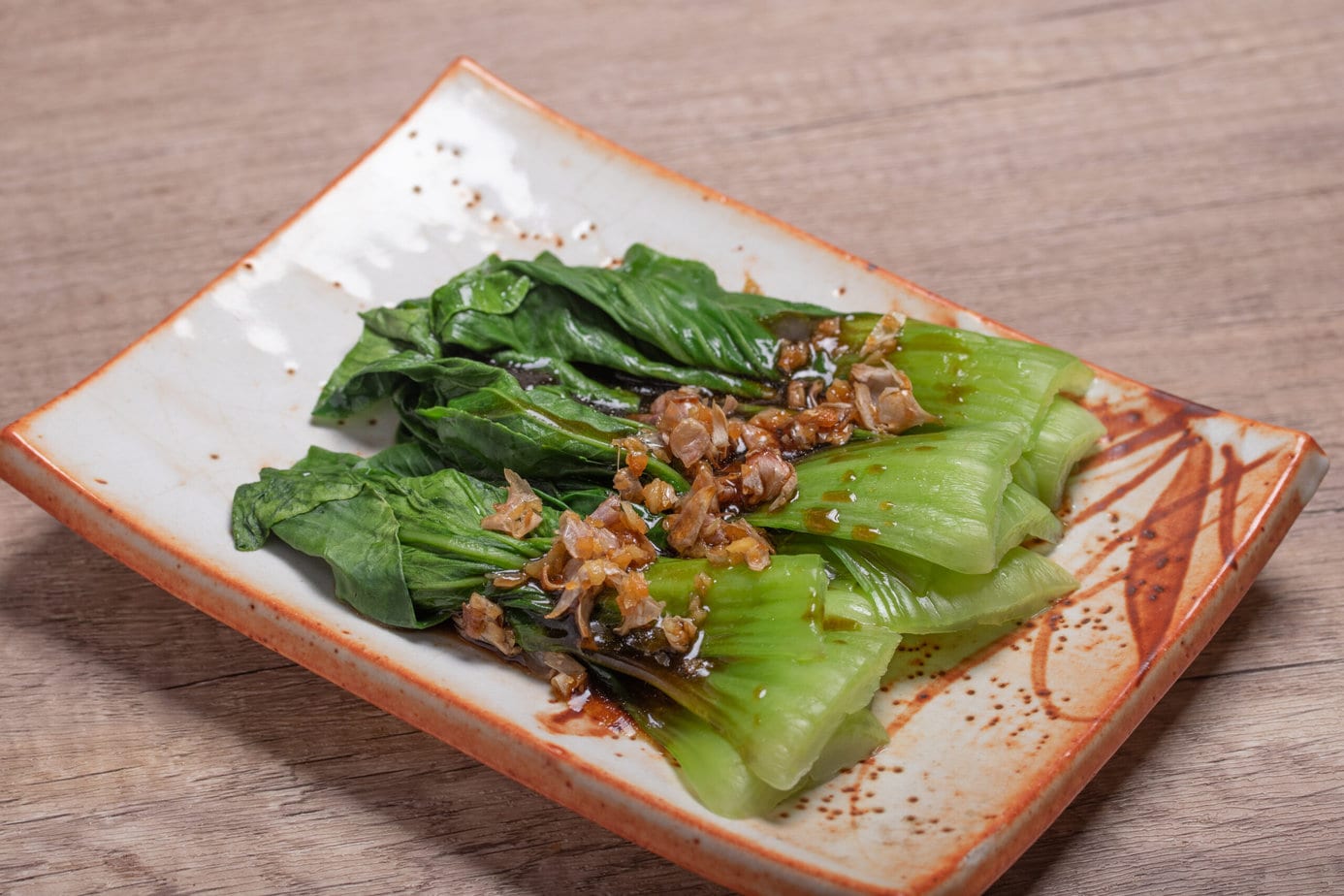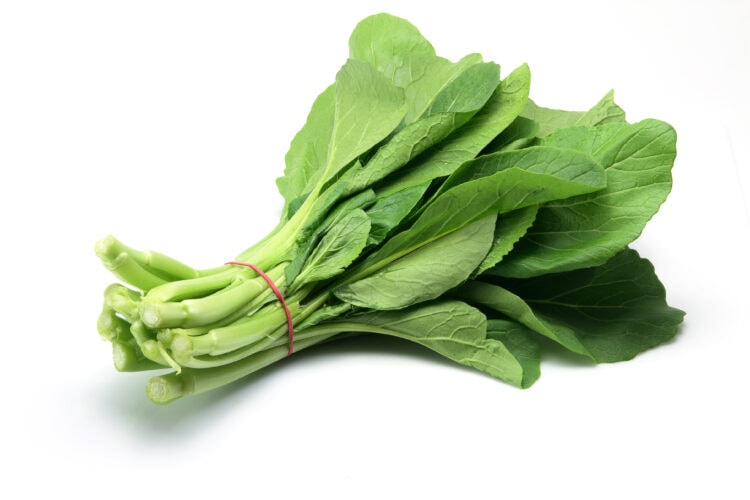What is choy sum?
Choy sum, also known as “yu choy” or “yu choy sum”, is a leafy green from the cabbage family. In this article we simply call it Chinese cabbage, but the name “choy sum” literally means “vegetable heart”.
It is one of many varieties of Chinese cabbage, harvested with or without its stems and usually sold in bunches. In Chinese cuisine, Thai cuisine and Indonesian cuisine, however, every part is eaten – leaves and stems alike. Whether stir-fried, steamed or cooked in soup, choy sum always stands out. Prepare it any way you like!
Origin of choy sum
This variety originates in mainland China. Over time, intensive cultivation produced new strains that spread across Asia, notably influencing Japanese cuisine and Vietnamese cuisine. Today, choy sum is enjoyed worldwide, and it is no longer rare to find it in Europe or the United States.
Varieties of choy sum
Countless kinds of Chinese cabbage have been cultivated since the 5th century, each bearing a name from a different Chinese dialect. You may therefore come across “bok choy”, “gai lan”, “Hong Kong choy sum” … and many more.
Remember that these are all distinct varieties. Choy sum alone boasts roughly 40 types that thrive mainly around the Mediterranean – in south-western Europe, north-western Africa and, of course, throughout China, where it is especially popular.

What does choy sum taste like?
Choy sum grows on stalks topped with small yellow blossoms. Every part is edible, from the leaves to the flowers, which have a gentle mustard flavour.
Despite this peppery note, choy sum is one of the mildest and most tender cabbages, especially when picked young. Its slight bitterness intensifies as it matures. Many people compare it to a cross between green cabbage and spinach. When cooked correctly, it stays wonderfully juicy.
Choy sum in cooking
In Hong Kong, choy sum is the signature vegetable of local cooking. Fresh greens are usually cooked briefly to preserve their flavour. If you plan to cook it, trim the base, separate the leaves and rinse everything under cold water. In traditional Cantonese cuisine, the vegetable is blanched quickly and finished with a drizzle of oyster sauce, soy sauce, Shaoxing wine or sesame oil.
Many cooks even save the blanching water for soup stock – nothing goes to waste. You can also wilt choy sum in a wok or steam it. The key is quick, high heat. Choy sum pairs beautifully with meats such as chicken or pork, and it is excellent with seafood.
You can also give it a more Western twist by sautéing it in butter. Whether or not you have the essentials of Asian cooking on hand, you really can’t go wrong!
How to substitute choy sum?
You can replace choy sum with several other Chinese cabbages, but bok choy is the closest match. It is equally versatile and its flavour recalls celery or Swiss chard.
Spinach works in a pinch too. Although it has a stronger taste and lacks choy sum’s crunchy texture, it offers a similarly mild, earthy profile that characterises choy sum.
Where to find choy sum?
Choy sum is readily available in the produce section of most Asian grocery stores. Because it can be grown year-round, it is almost always in stock, even though it is considered more of a winter vegetable.
When shopping, look for firm stalks with vibrant colour. If you have a green thumb, good news: choy sum is easy to grow. Just remember that it cannot withstand drought, so keep the soil consistently moist. With a little care, you can enjoy a generous harvest!
How to store choy sum?
For best results, slip the stalks into a plastic bag and place them in your refrigerator’s crisper drawer. Use them within 3 days if possible. Cooked choy sum freezes well and will keep much longer.

Cantonese Choy Sum with Garlic
Ingredients
- 1 bunch choy sum
- 2 tablespoons peanut oil
- 2 cloves garlic minced
- 1.5 tablespoons light soy sauce
- 2 teaspoons water
- 1 teaspoons sesame oil
Instructions
- Bring a pot of water to a boil and add a little salt.
- First add the stem part of the choy sum to the boiling water, wait 30 seconds, then add the leafy parts. Blanch the greens for about 2 minutes or until tender.
- Drain the choy sum in a colander. Lay them on a cutting board and slice them in half lengthwise. Transfer the greens to a serving dish.
- Heat the oil in a small pan over medium heat. Sauté the garlic until fragrant. Add the soy sauce, water, and sesame oil; mix well.
- Remove the pan from the heat and pour the sauce over the choy sum. Serve hot.

